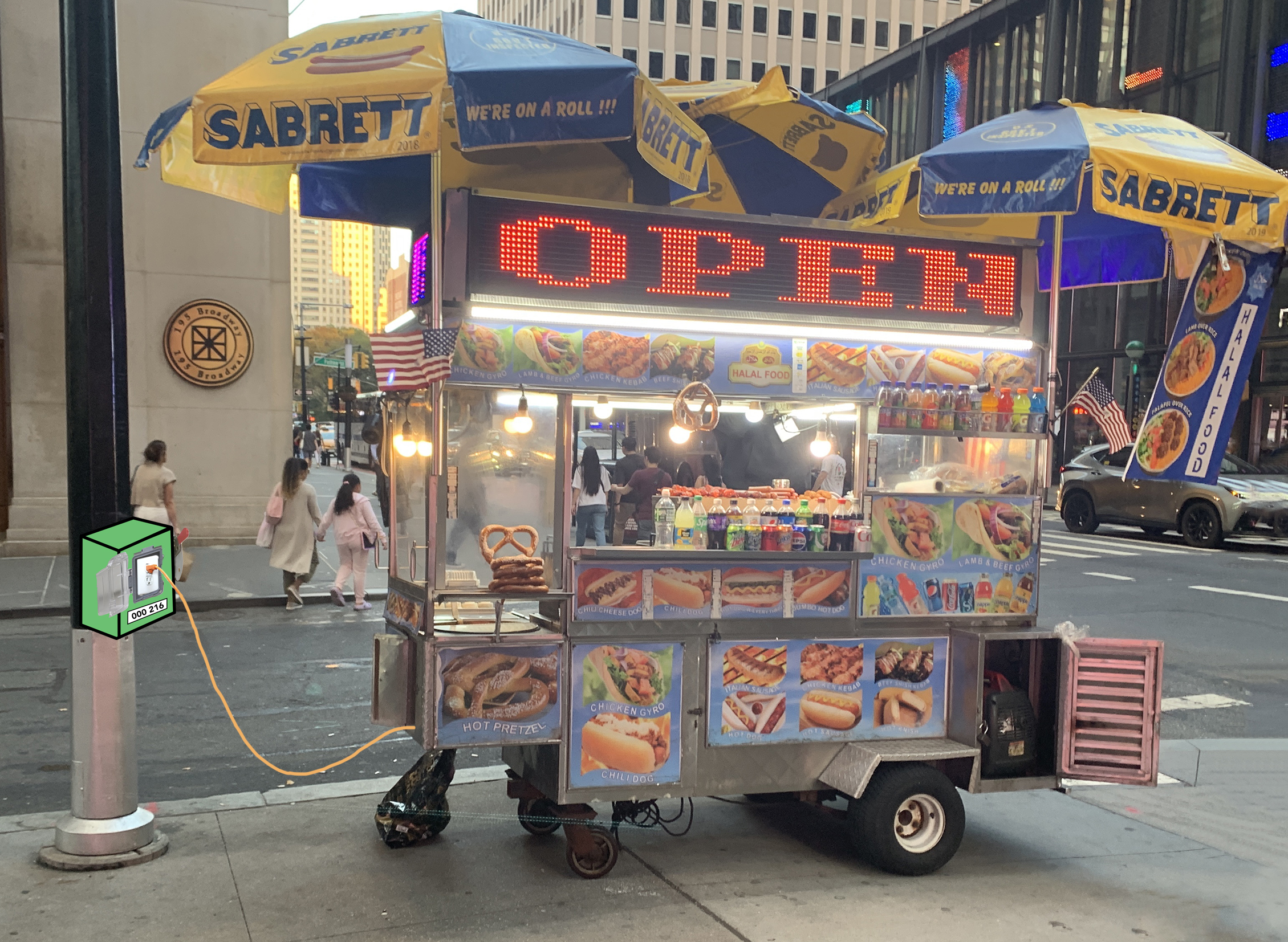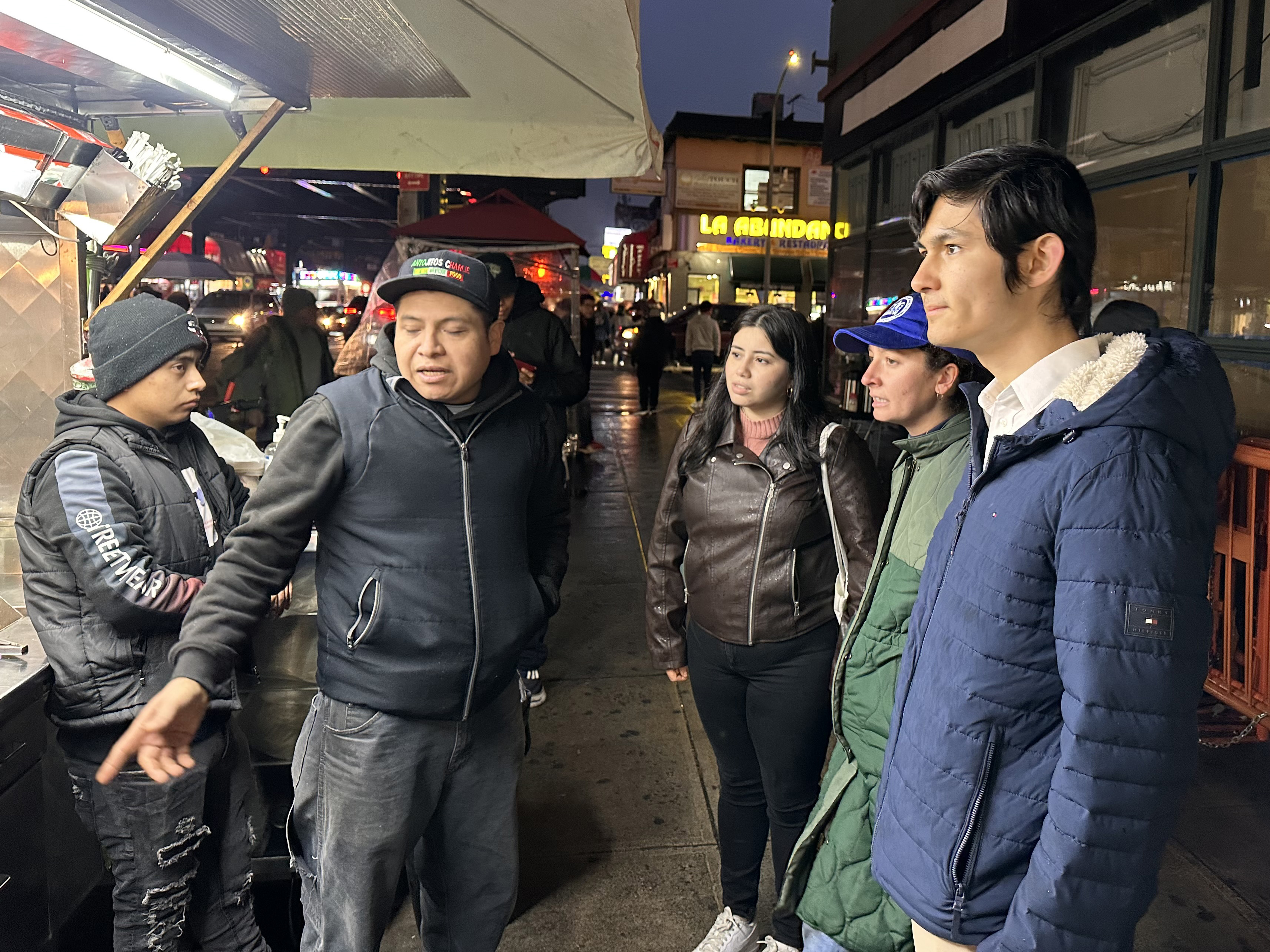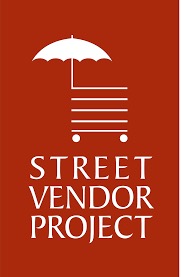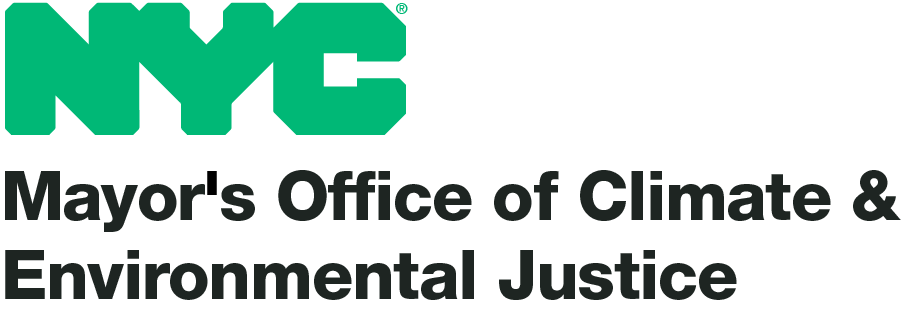Connecting Street Vendors to the Grid
Every year, an average street vendor burns 450 gallons of gas, emitting 4 tons of CO₂ equivalent and the same amount of smog as 180 cars driving coast to coast. This smog is localized to the one area the vendor operates, single-handedly making the neighborhood's air quality worse. Given that NYC has bad air quality (D according to the American Lung Association) and New York State plans to cut emissions by 85% by 2050 (based on 1990 levels)[2], it is essential that we electrify street vendors. Doing so will not only fight climate change and improve air quality, it also has the following benefits for vendors:
- protects their heart & lung health
They will not have to inhale particulate matter, volatile organic compounds, and other toxic gases.
- saves them money.
They currently pay ~32¢ in gas costs per kWh whereas the grid's electricity costs 2–20¢. This would save them $583–1458 each year. Additionally, they do not have to pay to buy a generator, which costs $1,400 upfront.
- makes them not have to listen to the loud generators all day.
This health study shows that listening to the generators is bad for your health
- saves them time and frustration from repairing the generator
Equity
This issue is much about climate change as equity. Almost all vendors are immigrants, so giving them access to electricity like every other storefront has is an important step in making opportunity equal to all.
Vendors are often parked right next to street lamps, so we can install an outlet box for around $5,000 with a meter. Using an app, vendors can unlock the outlets and be charged for the electricity they use. Electricians have said that this is feasible as long as DOT and ConEd approve.
This initiative is endorsed by the Street Vendor Project, and there are vendors eager to be in this pilot.


Electricity from Generators
Timeline
- 10/23/23 Feasibility assessed with electricians
- 10/31/23 Meeting Mohamed Attia (Street Vendor Project's Managing Director)
- 12/1/23 Speaking with vendors and Councilmember Krishnan's office in Jackson Heights, Queens

- 12/18/23 Manhattan Community Board 1 Environmental Protection Committee meeting with DOT, ConEdison, and MOCEJ.
- 1/17/24 Meeting with the Mayor's Office of Climate and Environmental Justice (MOCEJ) and DOT.
- 2/8/24 Meeting with MOCEJ to finalize an application for an EPA's grant from the Infrastructure Reduction Act.
Citations

